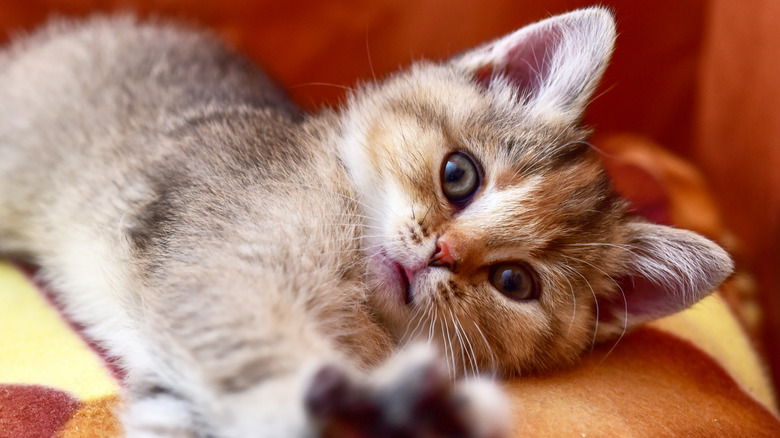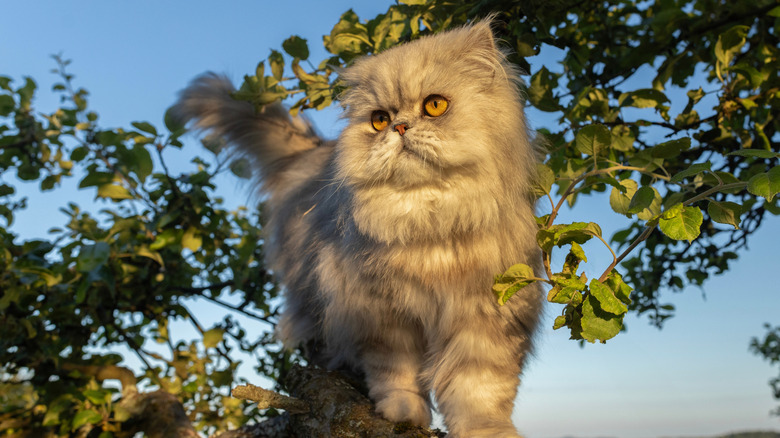Why Chinchilla Is One Of The Rarest Cat Colors (And The Breeds That Have This Unique Coat)
Like sunlight dancing on freshly fallen snow, the coats of chinchilla cats mesmerize feline enthusiasts the world over. Their rare coloring, named after the chinchilla rodent, shines with the same silvery elegance as the rodent's fur, as if nature used the same brush to paint both. This dazzling effect is achieved through a combination of specialized genetic traits. The melanin inhibitor gene keeps the base of each hair pure white. The wide-band gene softens tabby patterns, creating a delicate gradient of color at the tips.
With each hair thus gradated like the edge of a shadow fading gently into light, we get the signature chinchilla effect. It also gives the fur a sparkle in shades of silver, gold, or black. The chinchilla coat's beauty is further enhanced by other distinctive features of the breeds that have it, such as the Persian and Maine coon. This includes their large, expressive eyes and their rounded faces with soft, gentle expressions.
Breeds and breeding challenges of chinchilla cats
The chinchilla coat pattern is most famously associated with Persian cats. Their luxurious fur highlights the shimmering silver or golden tips. This breed has a long history of captivating cat enthusiasts, not only for its stunning appearance but also for its distinct flat-faced look, which places them as a brachycephalic cat breed. However, the chinchilla pattern is not exclusive to Persian cat breeds. It is also recognized in British shorthairs, whose dense, plush coats beautifully showcase the sparkling silver effect. Additionally, the Burmilla breed — a hybrid of a Chinchilla Persian and a Burmese — shares a similar genetic heritage and showcases a comparable shimmering effect in its coat, making it a fascinating relative in the world of rare feline coat patterns.
The genetic complexity behind this coat pattern is as intricate as trying to create a perfect gradient in a painting. Even small changes can lead to a different effect. The rarity of the coat color stems from the intricate genetics required to achieve it. Both parents must carry specific genes, including the melanin inhibitor gene and wide-band gene, which interact to produce the delicate tipping effect.
Even then, not every kitten will inherit the exact pattern. This makes chinchilla cats not only striking to look at, but also a challenge to breed consistently. Smaller litter sizes, particularly in breeds like the Persian, further contribute to the chinchilla's rarity. These breeding challenges make it difficult to maintain the chinchilla pattern across generations. Whether in the luxurious Persian or the sturdy British shorthair, this shimmering pattern remains one of the rarest cat colorings most sought-after and admired among cat lovers.

